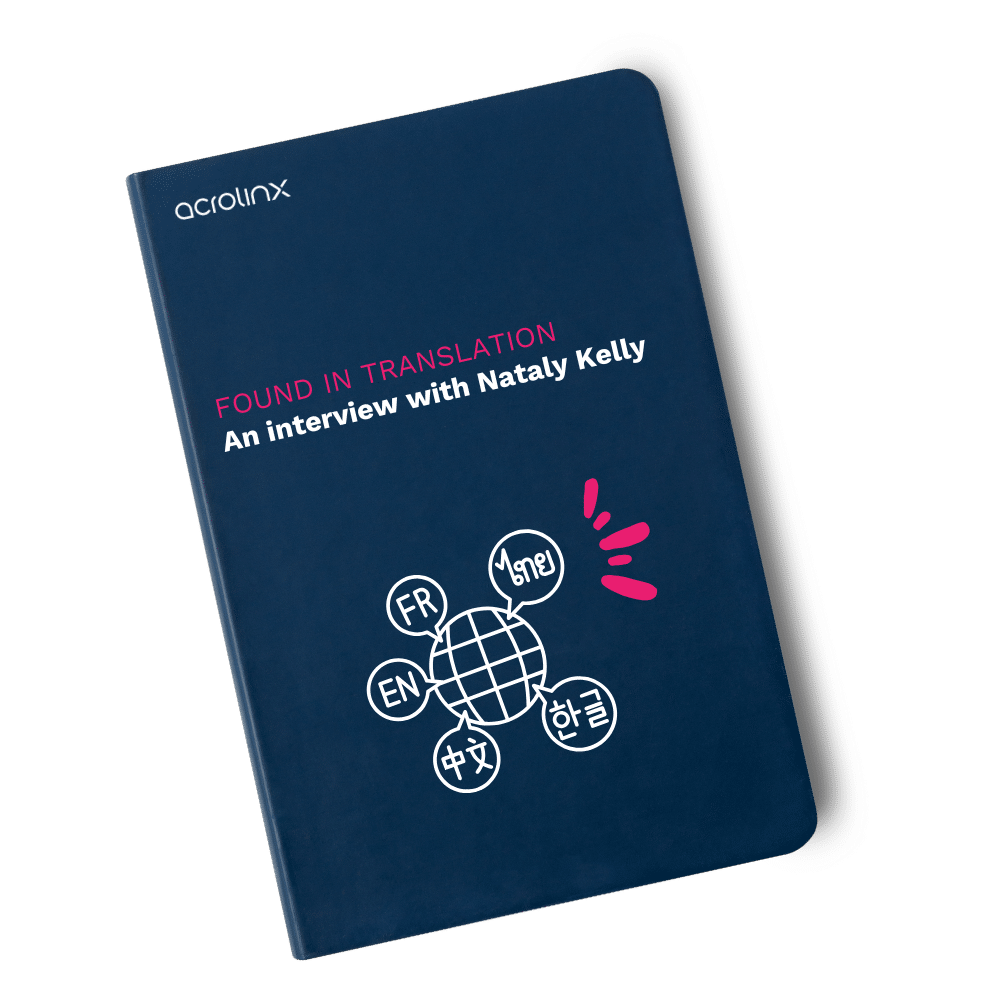AI Content Software for Global Content — Exploring Translation Technology

In today’s globalized world, the demand for accurate, localized foreign language content is growing. For proof, just look at the numbers: the global language services market is valued at 60.68 billion dollars in 2022 and is projected to reach 96.21 billion dollars by the end of 2032 (Fact.MR).
If you’re working for a business with an international audience or stakeholders, and you aren’t already producing global content, maybe it’s time to start rethinking your position. To understand why, let’s take a closer look at translation.
Benefits of AI translation software
It’s no secret that people prefer to communicate in their native language. And while there are more than 7,000 languages spoken throughout the world, over half of the world’s population speaks just 23 of them. Not only that, approximately 90 percent of online spending is accounted for by people who speak just 13 languages (you can see which ones here).
There are serious benefits to translating your company’s content into any language, especially one of those 13. The biggest benefit, of course, is that it opens you up to a much broader range of potential customers. Research by the Common Sense Advisory found “a full 63 percent of global brands recently reached more customers by increasing the number of languages on their websites.”
While there’s no doubt that English is the lingua franca (53.6 percent of web content is in English), imagine the size of the non-English market you may be overlooking. Good, accurate foreign language content shows that your organization cares about non-English speaking customers, and that you’re trustworthy, professional, and local.
Having said all of that, it’s important to remember that bad translations can have disastrous consequences. They can lead to embarrassing PR blunders (as in these examples), or have more devastating results on your business. It’s important to be smart about how you approach translation in your global content strategy.
The rise of translation technology
While free translation tools may be good enough for ordering dinner in Italy, or finding a doctor in Uruguay, they’re not the answer for translating your business content.
Fortunately, there are other solutions. With machine translation, for example, computers learn from huge databases of already-translated text using Artificial Intelligence (AI) and deep learning. As a result, they become better over time at making decisions about how to translate content from one language to another. There’s no doubt that machine translation has a part to play in creating efficiencies, but it currently lacks the logic and reasoning skills of human translators and content creators.
Is AI replacing translators?
Professional human translators are able to understand the meaning beyond the words, and can craft translations that reflect the true intent of the source content. In business, literal translations produced by a machine don’t always cut it. This is especially important when you’re thinking about brand voice and messaging. It’s important therefore to invest in high-quality translation services to produce the best results. While those services increasingly rely on machines to assist with translation, they add a layer of human review and post editing to ensure quality.
Importance of quality language translators
Languages are in a constant state of flux — adding and dropping terminology all the time. And a region’s lexicon may also differ vastly from its neighbor’s. Practically speaking, this means that you simply can’t find a substitute for humans when it comes to performing high-quality translation and localization.
Human translators are still important even with generative AI technology because they can understand the cultural nuances and context of a language better. They can interpret idioms, slang, and humor in a way that AI may struggle with. Human translators can provide a personal touch and tailor their translations to the specific needs of the audience, making sure that the message is accurately conveyed. Likewise, they can handle complex or ambiguous situations where AI might produce inaccurate translations. Overall, human translators bring a human touch and a deep understanding of language and culture that AI technology can’t fully replicate.
Remember, too, that the quality of any translation is highly dependent on the quality of source content. Something that’s poorly written (full of mistakes, or vague and unclear) is going to result in a bad translation, no matter how skilled the translator. Using content governance software to improve the source content before it’s translated is a great way to ensure quality results.
Acrolinx ‘s AI translation software
The future really is global, and great multilingual content presents huge business opportunities. Fortunately, translating your content isn’t as complicated as you might think. What’s important is that you reach new customers with content they understand, in a way that accurately reflects your organization. That’s a goal that makes sense in any language.
Using a tool like Acrolinx makes sure your source content is high-quality and aligned to your marketing strategy. Content teams are guided to create content that’s on-brand, clear, and compliant through the Acrolinx Sidebar. So no matter who your target audience is, they’ll be engaged by your content. Learn more here.
People also ask …
Is there any AI tool for translation?
There are plenty of AI tools for translation, such as Google Translate, Microsoft Translator, and DeepL. These tools use Artificial Intelligence and machine learning to translate text from one language to another. They’re designed to provide quick and convenient translations for various languages, making it easier for people to communicate across language barriers.
Is there an AI to translate documents for free?
Yes, there are AI tools available that can translate documents for free. Some popular options include Google Translate and Microsoft Translator, which offer document translation services using AI. These tools can translate various types of documents, making it easier for users to access free and convenient translation services for their documents.
Are you ready to create more content faster?
Schedule a demo to see how content governance and AI guardrails will drastically improve content quality, compliance, and efficiency.
The Acrolinx Team





